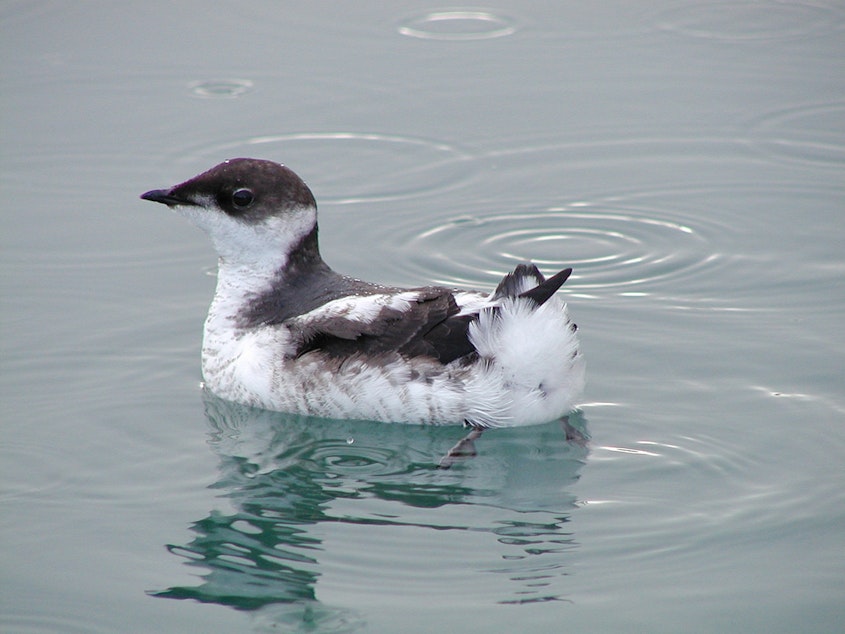This little seabird lives in tall trees that Washington state may cut down to support schools

Marbled murrelets have one of the more bizarre daily routines in the avian world: They spend the day diving deep beneath coastal waters to catch small fish. In the evening twilight, they fly home through the air at 60 miles an hour, flapping hard — like potatoes with wings — to reach their mossy nests in the tops of old trees, as much as 50 miles inland.
Before dawn, they make the same commute in reverse.
This dependence on big trees has them in trouble. The little seabird was put on the federal threatened-species list a quarter century ago, but even so, Murrelet numbers have fallen by about half in Washington since 2001.
Now Washington state officials are launching a long-term strategy to keep a little bird with a long commute from going extinct.
The Washington Department of Natural Resources is taking public comment through Thursday, Dec. 6, on its proposal to protect most of the threatened bird’s nesting habitat on state land, but to allow 38,000 acres of those coastal forests to be logged over the next 50 years.
Most of the Northwest’s old trees are long gone, and some of the remaining ones are on state land open to logging.
Washington’s Department of Natural Resources has a mandate to make money for public schools from its 3 million acres of land.
The Department of Natural Resources aims to reverse the murrelet’s steep decline — as required by the federal Endangered Species Act — and let timber-dependent communities stay afloat.
Lisa Remlinger with the Washington Environmental Council said the state’s preferred option would yield even fewer murrelets in 50 years than survive today.
Under that option, murrelet habitat in the North Cascades would take the biggest hit, while logging levels in Pacific County, near Willapa Bay, would be reduced the most.
The Department of Natural Resources has also been convening a group of interested parties it calls the “Solutions Table” to find ways to accommodate the needs of murrelets and communities that have thrived by cutting down the old forests murrelets nest in.
Two industry-representing members of that advisory group – Jim Sayce with the Pacific County Economic Development Council and Port of Port Angeles Commissioner Connie Beauvais – could not be reached for comment on Monday.
The Solutions Table is expected to release its report later this month with recommendations for helping murrelets and the timber towns that rely on the same forests.




